Cannes is a completely unusual plant that is valued for continuous magnificent flowering and a wide color palette of buds. Growing Cannes is not at all troublesome, and this can be done both in the open soil and at home. Today we will tell you everything you need to know for growing and breeding Cannes.
Morphology Cannes
At first glance, Cannes amazes with its powerful stems and large colorful flowers. Its height depending on the variety can be from 50 cm to 2 m and even more. The rhizomes of the tube and very fleshy. The leaves are oval or elliptical form - they are also quite large and wide. Cannes flowers can be of a wide variety of shades, ranging from pearl white, ending with rich burgundy and gentle pink. At the same time, during flowering, they do not exude absolutely no smell. Due to the pomp and the massiveness of the canne plants themselves mainly use for landscaping areas, decorating water bodies, fences and flower.
Species (hybrid) cannes, unlike their "natural" fellow, have not such large leaves, but lush and more colorful flowers. Also there are differences and in flowering periods - the early grades bloom from the beginning of June or even from the end of May, while everyone else is dismissed in the middle or end of June. The riot of paints continues all summer and does not dry up to the first frosts. It was for this that Kanne appreciate most - while all the plants have long been silent, Cannes continue to delight the gaze.
For landscaping plots, a hybrid cannon is most often used by crossing the best natural species. These plants are very unpretentious, but in order to get lush flowering, it is recommended to provide them with due conditions. Fortunately, it is not difficult to do it. Since Cannes have a perennial plant, it is very difficult to winter in the middle strip, not to mention the northern regions. This is the only difficulty - it should be sent to the shelter to winter.
In the rest of the Cannes - a real gift for gardeners and lovers of beautiful indoor plants. Some cannes varieties are great for growing at home, but a little later. Flowers are practically not affected by parasites and diseases. They love light, protected from the wind of a place with loose fertile soil. Since the plants grow quite large, they need a lot of free space. So that the stems come out strong, and the leaves with flowers are large, Cannes should be abundantly watering or planted on the shore of the reservoir.
Venna varieties
Cannes hybrids used for landscaping are called Cannes Sadovaya. They are characterized by larger colors and bright color, so they are able to quickly "revive" any landscape. Especially loved by the gardeners of Cannes orchidaya, but skillfully combining various varieties, you can achieve unique natural harmony. Indian Cannes is the progenitor of all known species today. The selection forms of Indian Cannes are called garden. The most popular canna Crosi, orchid and deciduous. Consider each of the varieties in more detail.
Craz Cannes
The lowest view, reaching height from 60 cm to 160 cm. The appearance of the flowers is very much reminded of classic gladioluses. Cannes Croste can be found on a white raid on the leaves with a dark green or bronze tint. Petals of loose buds are effectively rejected by creating a beautiful flower shape.
The hybrid was bred by the French breeder with the name Crros, because he received such a name. It happened in the distant 1868, but until now, experts could not surpass the result received by the French - so beautiful turned out to look.
There are several varieties of Cannes Corrosive:
- Livadia - grows up to 1 m, has saturated red and raspberry inflorescences up to 30 cm long. Blossom starts since July.
- America is a higher variety that can reach 140 cm. It has a shade of red cinnabar with a diameter of about 12 cm. The height of the inflorescence is 30 cm. Blossom also begins with July.
- The president is the maximum height of 110 cm, has lush inflorescences up to 30 cm with red flowers.
Orchid canna
One of the most impressive species cannes, whose flowers resemble cattleia. It can grow up to 2m in height and is distinguished by very large flowers with a diameter of up to 18 cm. Petals have characteristic areas of edges. The leaves of the orchid cann rich green is sometimes with a purple sampling.
Most popular varieties:
- Annaben Acid Pfitzer - grows up to 140 cm, has inflorescences with a height of 30 cm with bright orange flowers. Blossom begins in July.
- Suevia - the maximum height is 100 cm, it is distinguished by the flowers of a bright lemon shade with a diameter of 12x15 cm. The flowering begins in the second half of June.
- Richard Wallace is a height of 100 cm, the length of inflorescence up to 23 cm with light yellow flowers with red spots.
Decide Cannes
This species is also called multi-flower. These are high plants capable of reaching 3 m. They differ not only by impressive dimensions, but also unusual blossoms - small (compared to other varieties) flowers with a diameter of up to 6 cm by paints are open on the stems.
The most popular grade of deciduous Cannes - Durban. The inflorescences of yellow-orange color, large leaves are covered with strips and have a whole set of shades - yellow, pink, bronze and green.
Genna reproduction
Channa's reproduction can successfully deal with even a novice gardener. It is easy to do both for growing in the open ground and for the decoration of the window sills in the urban apartment. Plugged canna seeds and vegetative way.
Seeds canna
Before buying Cannes seeds, consider that they do not always retain the varietal signs. Moreover, not all varieties can give seeds, so it is best to multiply the plants by dividing the root.
This method is more suitable for those who experience a passion for selection and seeks to bring their own variety. Seeds have a rather solid shell, which should be softened before planting in the ground. To do this, we need to quote them with boiling water, move to a thermos with warm water to 40s and wait 4 hours. You can also just leave the seeds on the battery at 12 hours or wrap a couple of hours on the bottom shelf of the refrigerator (for vegetables and fruits).
Sowing in mid-February in a light fertile soil, heated to a temperature of 23c. In the room where Cannes will germinate, it is necessary to organize a half-day and eliminate the occurrence of drafts. The first shoots will appear after 3-4 weeks. When the plants acquire 3-4 real leaves, they must be seeded on separate pots and keep at a temperature not higher than + 17c until the appearance of an open ground. With this method of reproduction, seedlings can bloom in the very first year.
The division of rhizomes
However, the most chances are in the first year blooming healthy cannes - split tubers. This follows in early March. Drop the plant and divide the rhizome so that at each part there is at least one large kidney or 2-3 kidney smaller. Separate sections Plush with wood coal made into powder. Place all parts of the rhizomes into one greenhouse container on sandy soil or river sand, trying to put them close to each other. The kidney should be placed horizontally. Plush it with a centimeter layer of sand and periodically spray with water from the spray.
To germinate cannes from rhizomes follows at a temperature of 20-24c. Ideally, the pot is better to gently warm. When the leaves appear, the plants should be searched so that they are not close. For this, you will need a small pot. Put them in a bright room with a half and maintain a temperature there is not higher than + 17c until the sprouts are fixed and cannot fit. Watering produce 1 time in 10 days, dissolving in 2 g of warranny in 10 liters of water. After that, they can be planted in an open ground.
Extraction at home can be skipped, but then bloom will start only for the second year.
Landing Cannes
The landing of Cannes to the Earth should be postponed until spring night frosts go. When the weather becomes stable warm, you can proceed to the preparation of the soil. We have already written that Cannes loves light fertile soil and light windless sections. In essence, they are suitable exactly the same conditions as for growing cucumbers, therefore, experienced gardens of difficulties in the organization of space should not occur. Experts recommend landing cannes not before May 9, since even the slightest frosts can move the flowering period until next year.
The recipe for the perfect soil for Cannes is simple: humus mix with large sand and peat in equal share and add a sheet of land. It is mandatory to arrange a good drainage. Earth must be processed deeply and well fertilize (approximately 4 kg by 1 square meters. M). You can add horse manure to the ground to a depth of 80 cm and spray it with a 30 cm layer of the Earth.
Lunkers for planting Cannes should be at least 30 cm deep. If you plan the rhizomes with the leaves, the wells must be pre-poured with water. If the soil is very dry, it should be watered before and after the tuber injection.
For disembarking, non-sprouted tubers, the well should be done much smaller - up to 9 cm. This method of cultivation is better practicing in the southern regions of the country. Since cannes need a lot of space, the distance between the wells should be about 50 cm on each side. Watering to produce regularly as the soil drying until the stem with leaves will be processed, after that, water just less often.
If you are all done correctly, then from the moment the landing in the ground before flowering will be held about 2 months. During this period, plants need to constantly and abundantly water, loosen the soil and feed fertilizers. Make a 40 g of a mixture of mineral additives (15 g of nitrogen, 10 g of potassium and 25 g of phosphorus) per 1 square meter. m soil. If you use granular fertilizers, scat them around the stems on wet ground and immediately grind. In total, feeding should be conducted 2-3 times during the summer season.
Flower cannes from below-up, gradually opening buds over the entire arrow. Over time, new arrows grow and bloom, supporting lush beauty. Dry flowers are recommended to regularly delete so as not to lose the decorativeness of the plants.
Zimovka Cannes
Cannes do not tolerate the harsh Russian winters, so with the onset of the first frosts, they should be transferred to a warmer place. Spindle plants in dry weather in about the second half of October. It is necessary to remove them out of the ground so that the earthen com did not crumble, otherwise tubers can dry.
Stems with leaves should be cut up to 20 cm. Before this it is better to bind to each plant borger with a variety name, if the next year you want to make a landscape composition. Plants are placed in wooden boxes in one row and transfer to the room protected from wind and precipitation. There, in a couple of weeks, the remaining leaves and stalks, and Cannes "sleep".
Alternatively, Cannes can not sleep, but transplant into pots. This method will be useful if the frosts began very early, and some plants still did not have time to fond. Cannes stored until spring, after which they are again separated and planted into the ground.
It is very important to choose the right room for storing roots. The temperature in it should vary from + 8c to + 12c, the low humidity and the absence of drafts are preferably.
Video about Cannes will give a wider view of this unusual and beautiful plant:
Diseases and pests
The most pleasant in the cultivation of Cannes, besides lush and long flowering, the fact that they practically do not hurt and are not interested in most pests. Only sometimes you can find sick plants with spuns blackened with buds and white spots on the leaves.
Bacteriosis Cannes appear as a result of too abundant and frequent irrigation, and if you have noticed sick plants, they are better to dig up right away - it is useless to treat Cannes. As for pests, sometimes leaves can spoil the caterpillars of butterflies, with which insecticides are perfectly coping with.
Another trouble that can happen to Garden Cannes is damage to the root nematode. This is an insect that laying the larvae in the tubers of plants, as a result of which they swell and rot from the inside. Special preparations for the processing of the soil around the stems will help withdraw root nemat.
Home Cannes
Finally, a bit of the theory of Cane's cultivation as a room culture. Since this plant can reach 3 m high, it is better for home to choose low grades. Homemade Cannes will delight magnificent blossoms of 10 months a year, because for rest, unlike garden, they need only 2 months, and not all winter and part of spring.
You can grow it in a regular pot, like some ficus or cactus. For this, in the fall, dug your favorite garden canna and transfer it to a pot of about 50 cm. Before this gardening soil (earthlom) is better to handle insecticide so as not to risk relocation to the house of pests or bacteria.
Care and the cultivation of Cannes at home is much easier than in the open soil - you do not need to spray it from pests, weaning weeds, loosen the earth, to regularly feed it, etc. It is enough just to put a pot into a sunny place and periodically water the flower of the indentioned water temperature. Packed leaves wipe with a wet sponge or cotton swab.
Room Cannes will delight with its beauty even when it wonders - big fleshy leaves will not go anywhere and will not lose color. When all the flowers go, gradually cut watering, and then stop it at all. Cut the stem for 10-15 cm from the base and stop Cannes into a dry cool room with a temperature of no more + 10c for a couple of months (you can put on a glazed balcony or loggia).
Care care is so simple that even an inexperienced gardener will cope with it. This plant can be an excellent holiday gift and will delight the view of colorful buds. The lack of smell does not spoil the impression, on the contrary, it does not irritate a sensitive smell in humans and pets.
Cannes: photo
Cannes can be a central decoration of your garden, causing the attention of guests and passersby. In the photos below, it is shown how you can land the flowers so that they are most beneficial to emphasize the natural beauty of the landscape.

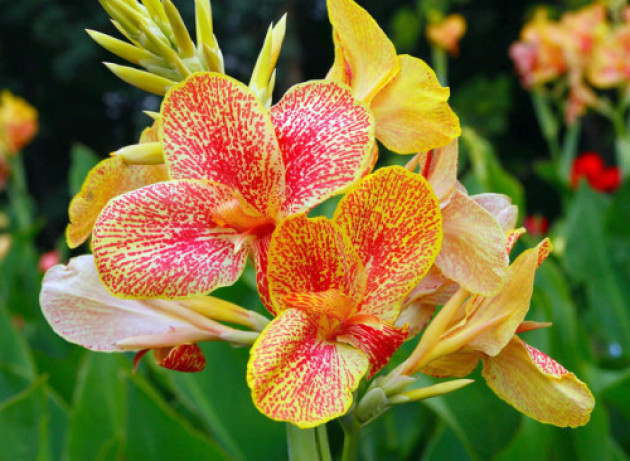

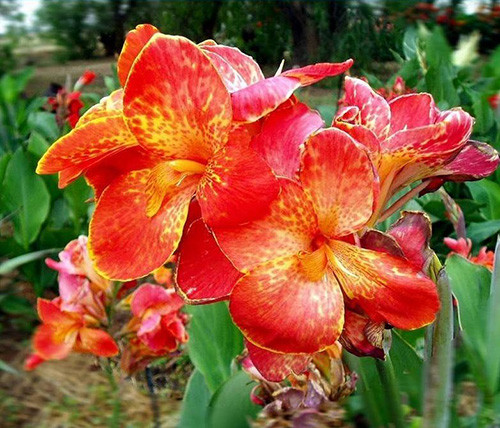
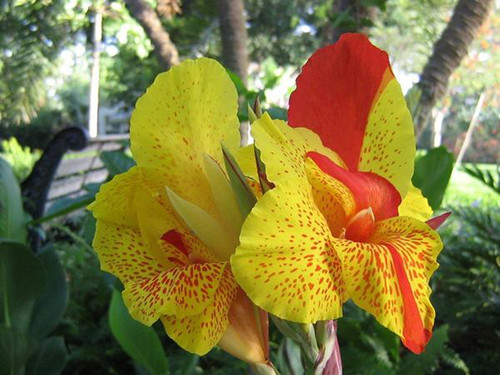
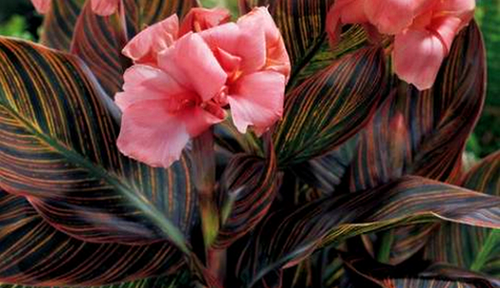
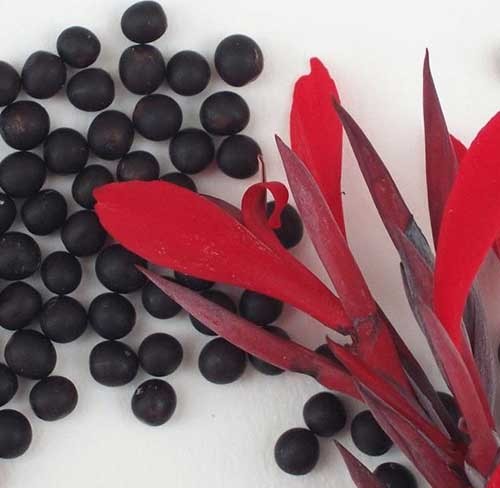
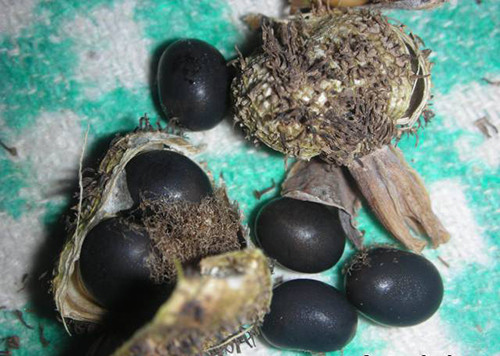
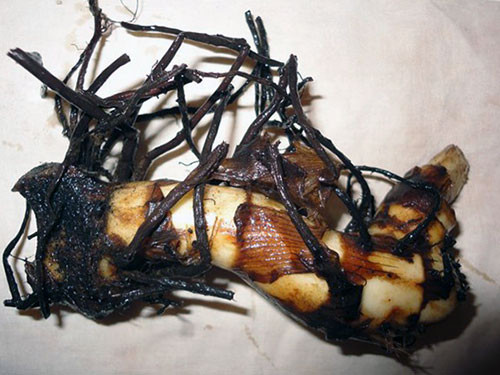
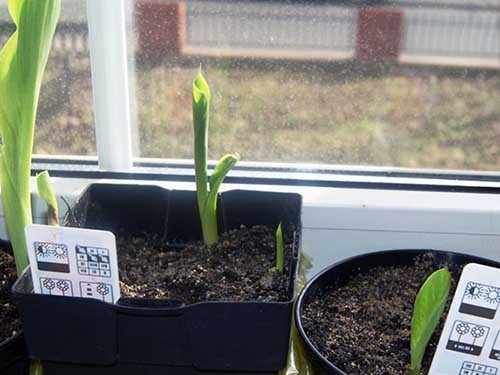
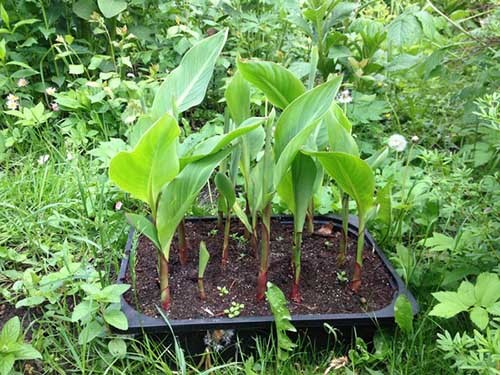
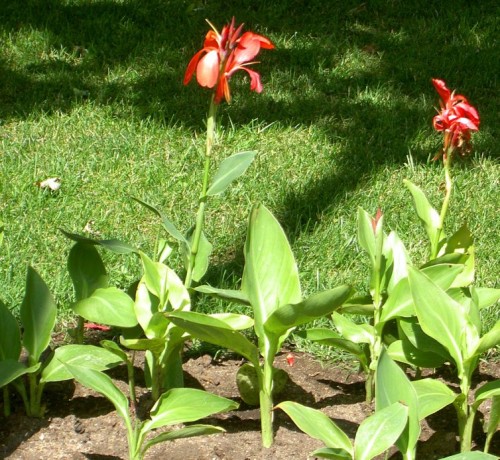
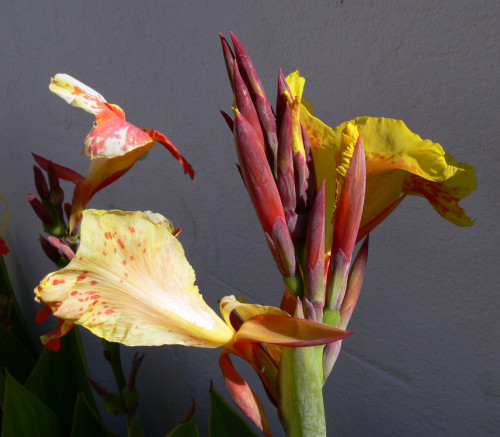
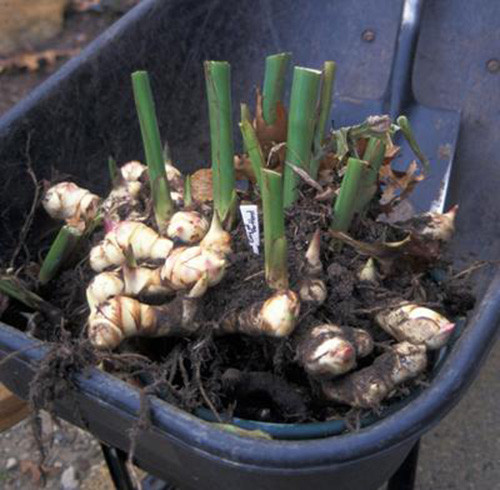
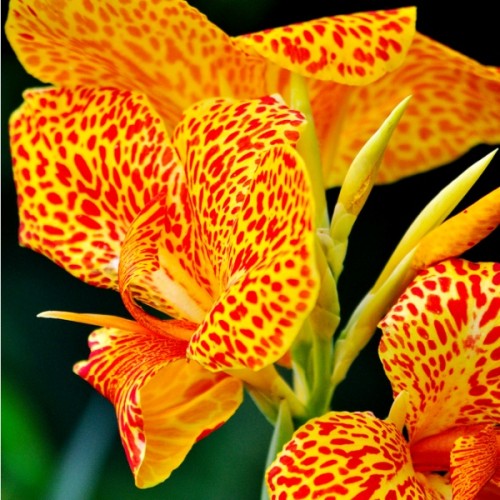
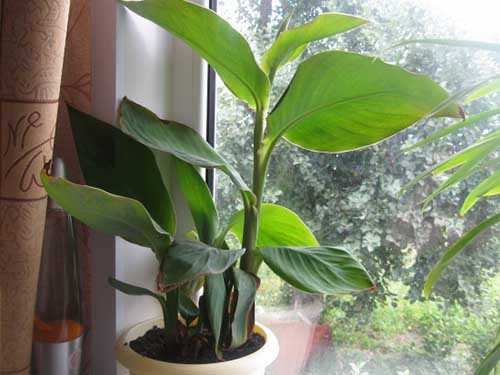
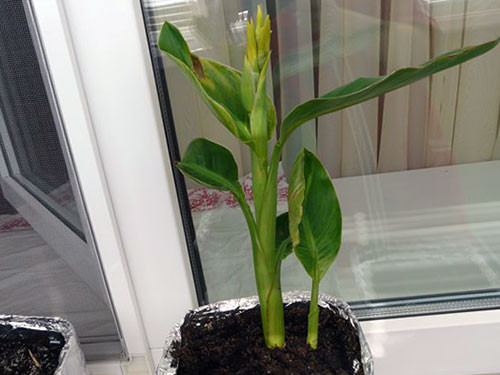
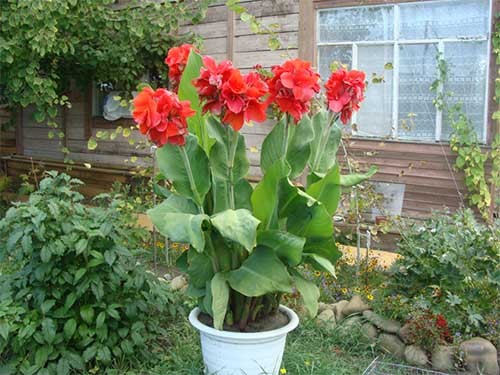
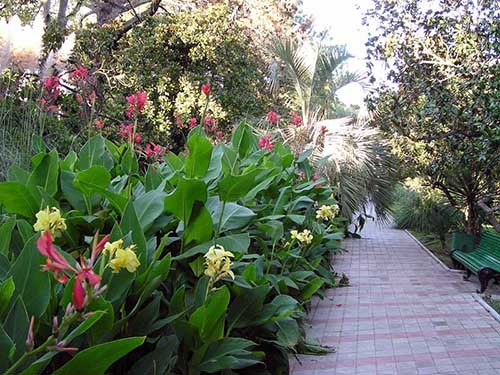
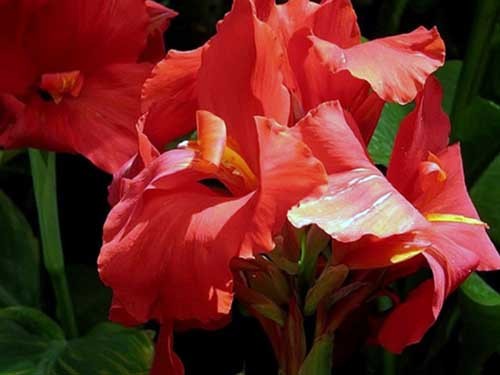
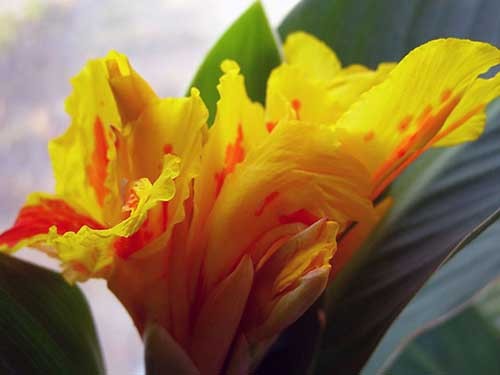
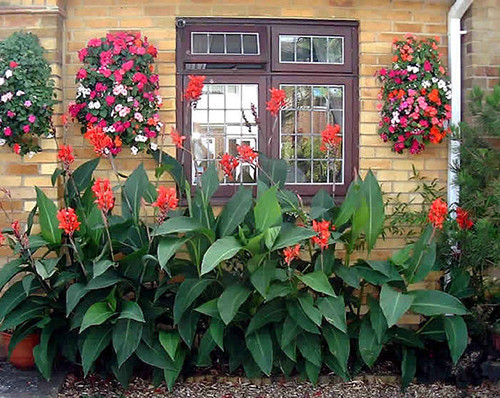
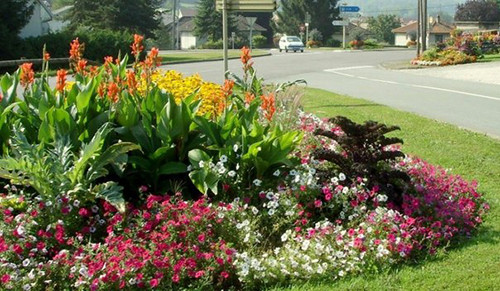
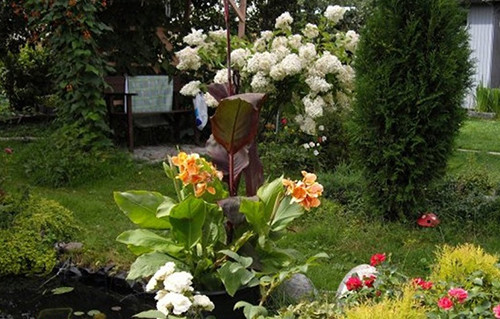
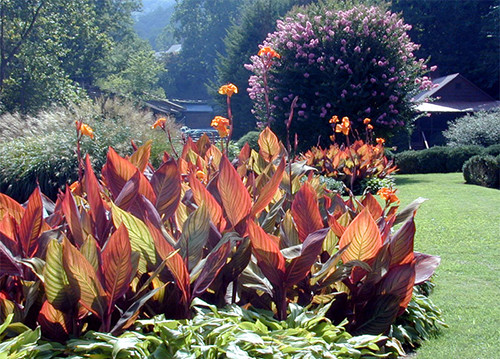












 Start a discussion ...
Start a discussion ...